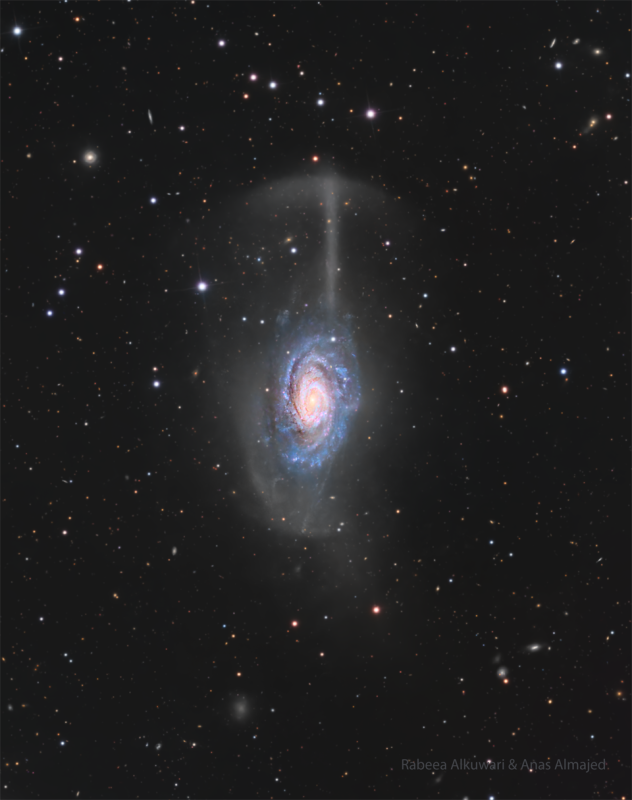
|
Credit & Copyright: Rabeea Alkuwari &
Anas Almajed
Explanation:
It's raining stars.
What appears to be a giant cosmic umbrella
is now known to be a tidal stream of stars
stripped from a small
satellite galaxy.
The main galaxy, spiral galaxy
NGC 4651,
is about the size of our
Milky Way, while its stellar parasol appears to extend
some 100 thousand light-years above this galaxy's bright disk.
A small galaxy was likely torn apart by
repeated encounters as
it swept back and forth on eccentric orbits through NGC 4651.
The remaining stars will surely fall back and become part of a
combined larger galaxy
over the next few million years.
The featured deep image was
captured in long exposures
from Saudi Arabia.
The Umbrella Galaxy lies about 50 million
light-years
distant toward the
well-groomed northern constellation
of Berenice's Hair
(Coma
Berenices).
APOD in a Modern Format
StellarSnap
|
January February March April May June July August September October November |
| |||||||||||||||||||||||||||||||||||||||||||||||||||||||
NASA Web Site Statements, Warnings, and Disclaimers
NASA Official: Jay Norris. Specific rights apply.
A service of: LHEA at NASA / GSFC
& Michigan Tech. U.
Based on Astronomy Picture
Of the Day
Publications with keywords: tidal stream - spiral galaxy
Publications with words: tidal stream - spiral galaxy
See also:
- APOD: 2025 September 4 Á NGC 4565: Galaxy on Edge
- APOD: 2025 August 22 Á A Tale of Two Nebulae
- APOD: 2025 August 19 Á Giant Galaxies in Pavo
- APOD: 2025 August 18 Á NGC 1309: A Useful Spiral Galaxy
- APOD: 2025 July 4 Á NGC 6946 and NGC 6939
- APOD: 2025 June 19 Á NGC 3521: Galaxy in a Bubble
- Rubin's Galaxy
